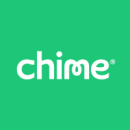For Senior Software Engineer Swathi Sri Kondagari, innovation at Chime is much more than just an initiative.
“It’s a mindset, and I’ve felt empowered to be a part of it from day one,” she told Built In.
Kondagari and her teammates are continuously pushing the boundaries of what’s possible in fintech by engaging in the company’s annual hackathon and taking part in Innovation Days, during which they find solutions to pressing challenges with the potential to scale or automate their work. She shared that these opportunities among others inspire them to understand problems more deeply, drive alignment and pursue problem-solving with fresh eyes.
At General Motors, Principal Software Engineer Behrouz Rabiee and his peers take a similar approach to fostering innovation. According to him, regular lunch-and-learn sessions and internal demonstrations are just a couple of the practices his team leans on to ensure they stay on the cusp of technological advancements.
“Without these innovation-driven processes, it would be easy to miss opportunities or spend months spinning without action,” Rabiee said.
Meanwhile, Director of Engineering Hari Sivaramakrishnan and his teammates at Grammarly embrace out-of-the-box thinking by engaging in various initiatives, such as quarterly “quality weeks.” This dedicated time enables team members to focus on ideas that aren’t always a part of their day-to-day work, whether that’s tackling tech debt or building prototypes.
“It’s a creative outlet that often surfaces unexpected and very impactful ideas,” Sivaramakrishnan explained.
For Kondagari, Rabiee and Sivaramakrishnan, cultivating a culture of innovation at their respective companies is key to more robust technology — and more connected team members. Read on to see how each of their teams fosters innovation and how this has improved the quality of the work they deliver.
General Motors manufactures vehicles with a focus on safety, sustainability and efficiency.
Innovative Practices That Make a Difference at GM
- “Knowledge-sharing sessions: Regular lunch-and-learn sessions and recently a more focused and dedicated version around Cruise and GM technologies to keep everyone aligned and encourage new ideas.”
- “Frequent internal demos: Our internal demos create a culture where it’s not just about delivering polished work; it’s about showing what we’re learning, trying and improving along the way, and getting feedback as early as possible.”
- “Open request for comment process: Anyone on the team, no matter their level, can pitch new ideas for architecture changes, process improvements or technology evaluations. It gives everyone a voice and keeps innovation moving.”
How has a focus on innovation increased the quality of your team’s work?
To me, innovation means a willingness to take big risks, move forward without having every answer and course-correct effectively along the way. Without these innovation-driven processes, it would be easy to miss opportunities or spend months spinning without action.
“To me, innovation means a willingness to take big risks, move forward without having every answer and course-correct effectively along the way.”
One great example is how we’re integrating Cruise and GM technologies. In a very short time, the team leaned into knowledge-sharing sessions, explored multiple paths through proof-of-concepts and relied heavily on the RFC process to document ideas, gather feedback and iterate quickly. These practices kept us out of silos, helped us avoid over-planning and allowed us to move quickly without losing alignment.
This approach led to immediate wins, like connecting GM’s highway data to new infrastructure, and opened up potential like using an onboard mining strategy to capture rare events by leveraging GM’s large vehicle fleet. Both instances fill important gaps where we historically lacked coverage. These initiatives are still ongoing, and I’m excited about the momentum and possibilities they’re bringing.
Chime’s member-centric banking app and easy-to-use financial tools are designed to help consumers gain more control over their money and take action toward achieving their financial goals.
What practices does your team employ to foster innovation, and how have these practices led to more creative, out-of-the-box thinking?
Since joining Chime, I’ve been consistently impressed by how the company fosters innovation. Just a month in, my manager and teammates encouraged me to participate in the annual hackathon. Chime’s hackathons bring together hundreds of “Chimers” and spark not only creative product ideas but also new connections across teams that continue to help me to this day.
Within my core team, we also host Innovation Days, where we tackle pressing challenges and find solutions that could scale or automate our work and reduce the team’s burdens. These small side projects don’t just help us; they free up more of our time to develop innovative products that improve our customers’ experiences as well. Beyond hackathons and Innovation Days, I’ve found that onsites, guild meetings, Donut chats and cross-functional workshops instill a strong sense of learning and collaboration. These moments spark deeper understanding, foster alignment and inspire fresh ways of problem-solving in us.
“These small side projects don’t just help us; they free up more of our time to develop innovative products that improve our customers’ experiences as well.”
How has a focus on innovation increased the quality of your team’s work?
Our focus on innovation enabled us to build data-driven dashboards that began as a side project. As part of the quality engineering team, we transformed these dashboards into impactful tools that provide essential, actionable insights and aggregate key metrics, offering a comprehensive view of product quality and health. Through these efforts, we’ve not only improved efficiency but also developed a stronger culture of ownership, collaboration and data-driven thinking.
Another example born out of a hackathon was our automated ticket triage process. What once required hours of manual effort across teams is now handled with greater speed and accuracy, significantly reducing overhead and improving response times.
How has a focus on innovation bolstered your team’s culture?
Having the support and bandwidth at both the team and organizational level to prioritize innovation has helped us move more quickly toward our goals. It has created a team culture and environment where people are always ready to roll up their sleeves and improve how we work, which in turn fosters a strong sense of collaboration. Events like hackathons, guild onsites and guild meetings provide great opportunities to bond and boost morale, especially important while working in a remote environment. These practices strengthen our team culture, making it easier to connect and support one another.
Whether we’re pairing on technical design docs or jumping into an impromptu huddle to brainstorm solutions, it has taught us all to value flexibility and shared ownership, which helps us stay creative, productive and aligned. Innovation at Chime isn’t just an initiative — it’s a mindset, and I’ve felt empowered to be a part of it from day one.
Chime Banking services and debit card provided by The Bancorp Bank, N.A. or Stride Bank, N.A, Members FDIC.
Grammarly’s AI assistant is designed to help teams and individuals craft professionally composed emails and documents.
What practices does your team employ to foster innovation, and how have these practices led to more creative, out-of-the-box thinking?
We focus on creating intentional space for innovation — both structured and organic. Each quarter, we run two-day hackathons where small, cross-functional teams tackle ideas of all shapes and sizes. It’s fast-paced and high-energy, and it often sparks some of our most creative solutions — many of which become real product features or internal tools.
We also dedicate time each quarter to “quality weeks,” giving everyone protected space to focus on ideas that matter to them — often ones sidelined by deadlines. This includes tackling tech debt, building prototypes and improving the developer experience. It’s a creative outlet that often surfaces unexpected and very impactful ideas.
Weekly demos keep the team connected and inspired by each other’s work, while ride-alongs with sales and on-call support rotations help engineers build deeper user empathy. Seeing how our work is pitched — or where it causes friction — sharpens intuition and improves decision-making. Together, these practices foster innovation, a strong sense of team bonding and a shared vision for how to deliver real value to our customers. The result is not just better ideas but better products.
“Weekly demos keep the team connected and inspired by each other’s work, while ride-alongs with sales and on-call support rotations help engineers build deeper user empathy.”
How has a focus on innovation increased the quality of your team’s work?
Our focus on innovation has had a direct and measurable impact on the quality of our work — from product design to code reliability to internal tooling. One example came from our support rotation: After seeing how cumbersome it was for support team members to access customer data, an engineer built a secure, time-limited access flow. It boosted both security and support efficiency — born from hands-on experience.
Some of our best product ideas have gone through multiple hackathon iterations. Revisiting ideas with fresh perspectives — across disciplines or teams — often leads to a better user experience and more robust implementation. One such feature shipped after several prototypes, and customer feedback was overwhelmingly positive from day one.
Hackathons have also improved our internal developer experience. Tools like linters, Storybook, and Zod-based validation were first prototyped in these sessions. Once adopted, they boosted productivity, improved code quality and reduced bugs before they hit production. By making space to explore, experiment and reflect, we’re not just generating ideas — we’re delivering better outcomes for our users and teams.











